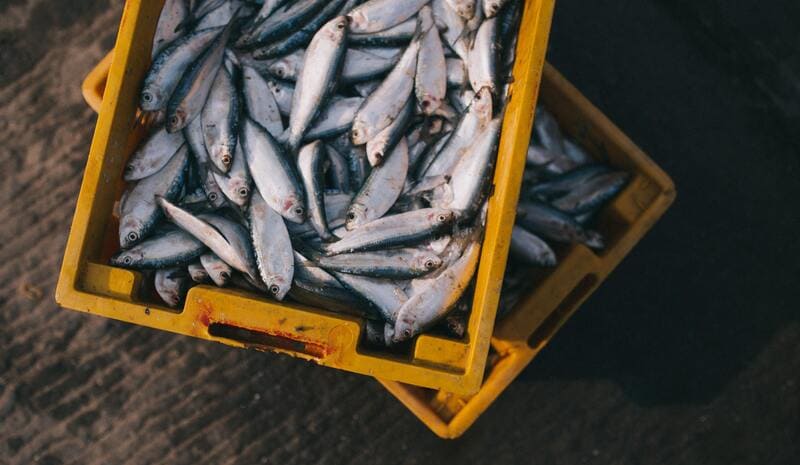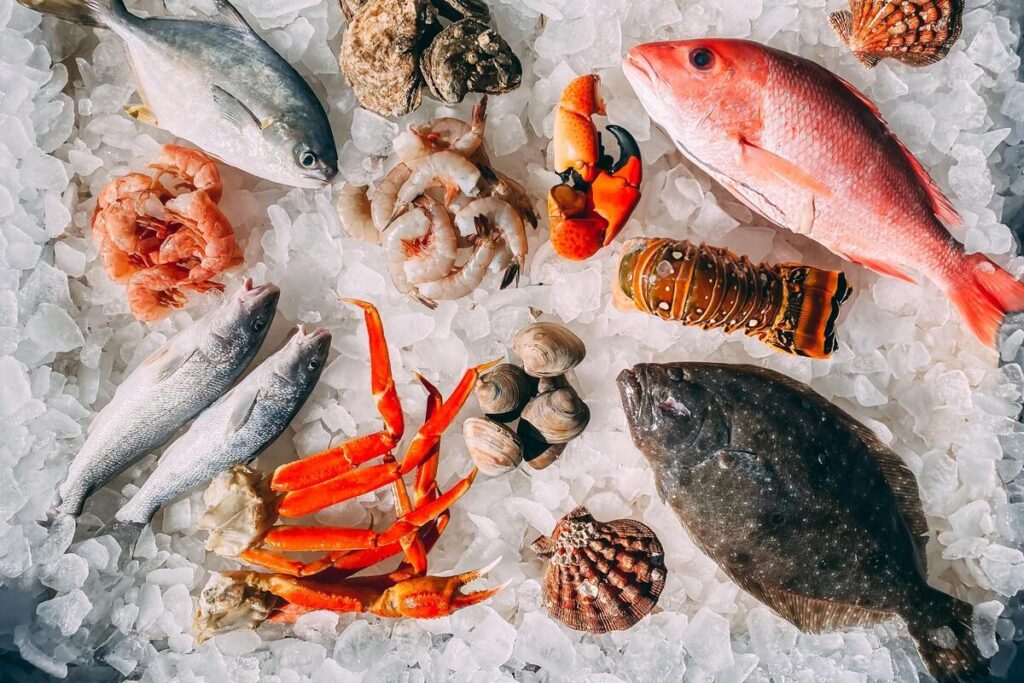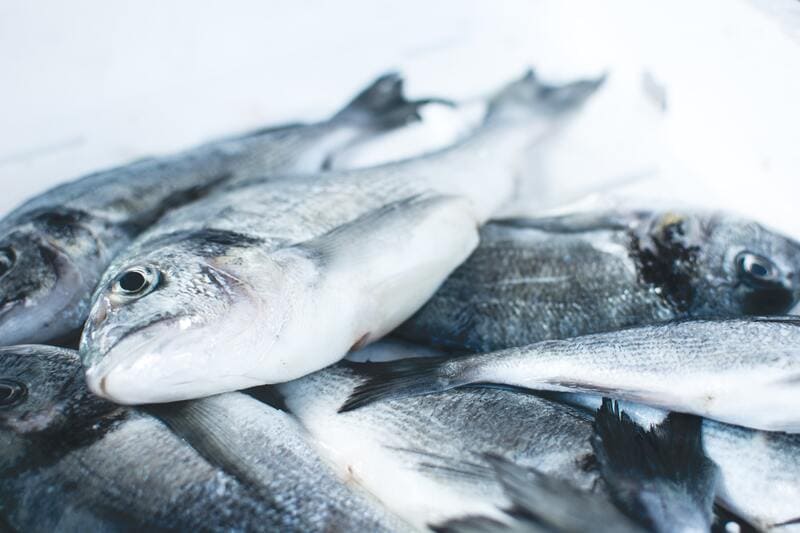As someone who loves to enjoy fresh fish, I know how critical it is to ensure that it stays fresh and safe to eat. Whether you’re a fisherman or a seafood lover, the fish temperature can make a difference. So, what is the best temperature to keep fish fresh?
The best temperature to keep fish fresh is between 32°F to 34°F (0°C to 1°C). This temperature slows down the growth of microorganisms that spoil the fish. Maintaining a consistent temperature in the storage area ensures freshness and safety. It can show the difference between a delicious meal and a disappointing experience.
I’m here to discuss the best temperature to keep fish fresh. This is so you can make the most of your catch and enjoy the benefits of fresh, healthy seafood. So, let’s dive in and understand how to keep your fish as fresh as possible!
The Optimal Temperature for Fish Storage

As stated, the best temperature for fish storage is 32°F to 40°F.
Maintaining this temperature range ensures your fish is safe and tasty. I’ve learned that fish is susceptible to temperature. Even slight variations can affect its quality and safety. For example, storing fish at a high temperature can cause it to spoil. Keeping it at too low a temperature can affect its texture and flavor.
I’ve learned to package and seal my frozen fish to prevent contamination. This also reduces the risk of cross-contamination with other food items. It’s also important to note the length of time you store your fish in the refrigerator. Planning is essential because you should not keep fresh fish for more than two days.
Finding the best temperature to keep fish fresh is an important part of enjoying fish flesh. By following these tips, you can be sure that your fish will be safe, delicious, and of the highest quality.
Why the Optimal Temperature is Important
When I go to the fish market and buy a fresh catch, I want to ensure that I can enjoy its flavor and texture to the fullest. I want to be sure that I am not putting my health at risk by consuming spoiled or contaminated fish.
Temperature plays a critical role in determining the freshness and safety of fish. It affects the growth of bacteria and other microorganisms that can cause spoilage. Understanding the temperature to store fish ensures you consume safe fish.
Bacteria are one of the biggest threats to the freshness of fish. The temperature at which you store them can impact the growth of bacteria. At temperatures above 40°F, bacteria can grow. This leads to spoilage and food poisoning. Keeping fish at the optimal temperature of 32°F to 40°F slows down the growth of bacteria. This reduces the risk of spoilage and food poisoning.
Also, maintaining the optimal temperature helps preserve the fish’s quality. Fish stored at higher temperatures can deteriorate, become soft, and taste bad. The optimal temperature helps prevent this deterioration. As a result, it keeps the fish fresh and flavorful for a longer time.
Factors Affecting the Temperature of Fish Freshness

Several factors can affect the temperature of raw fish. This can determine the shelf life and quality of the fish. These factors include:
Type of Fish
Different fish species have varying temperature requirements for optimal freshness. For example, oily fish such as salmon and mackerel are more perishable. Lean fish like codfish, fish fillets, and haddock need colder storage temperatures.
Storage Method
The method used to store raw fish can impact its temperature and freshness. For example, vacuum-sealing fish can slow down the rate of spoilage. The process reduces the amount of oxygen available for bacteria to grow.
Storing fish on ice can help maintain a low and consistent temperature. But it is vital to ensure the ice is fresh and the fish is not in contact with it to avoid freezer burn.
Length of Time Stored
The longer you store fish flesh, the more likely it is to spoil. The temperature of the storage area and the method used will determine the spoiling rate. For example, storing fish in a warm environment will spoil much faster than in a cooler area.
Environmental Conditions
The temperature and humidity levels in the storage area can impact the freshness of fish. For example, high humidity levels can cause the fish to become slimy. Low humidity levels can cause the fish to dry out and lose their freshness.
Methods for Keeping Fish Fresh at Optimal Temperature

As someone who loves tasty cooked seafood, I understand how important it is to keep fish fresh. After all, there’s nothing worse than spending your money on fresh fish to spoil it before you enjoy it! That’s why I’ve learned a few methods for keeping fish fresh that I’d like to share with you.
Here are several methods for keeping fish fresh at the optimal temperature:
Vacuum Sealing
Vacuum sealing is a method of removing the air from a container and sealing it. It slows down spoilage and keeps fish fresh for longer. This method is beneficial for storing fish for several days or more. You can store vacuum-sealed fish in a refrigerator or freezer.
Vacuum sealing is a popular method for keeping fish fresh at the optimal temperature. This method removes the air from a plastic bag with the fish, creating a vacuum-like seal. By eliminating the air, it helps to prevent oxidation, which can cause the fish to spoil.
Additionally, vacuum sealing helps preserve the fish’s freshness. It slows down the growth of bacteria, which can cause the fish to spoil.
Vacuum sealing can help to maintain the optimal temperature. It reduces the amount of air that comes into contact with the fish. This helps to prevent temperature fluctuations, which can cause the fish to spoil. Additionally, vacuum sealing can help prevent freezer burn. Freezer burns occur when you expose the fish to air.
Ice Storage
Ice storage is another method for keeping fish fresh. You should wrap the fish or place it in a plastic bag, then cover it with ice. The crushed ice from flake ice machines keeps the fish at a consistent temperature. This method is best for short-term use, as the crushed ice melts when the temperature rises.
Ice also provides a barrier between the fish and the surrounding environment. This reduces the risk of contamination and helps to prevent spoilage.
When storing fish, you should place it on a bed of ice or cover it with ice. Take care not to damage the delicate fish flesh. You should change the ice, especially if it starts to thaw frozen fish. This helps to maintain the optimal temperature of 32°F to 40°F (0°C to 4°C) and keep the fish fresh.
It’s also important to consider the quality of the ice. Contaminated ice can lead to the growth of bacteria and increase the risk of food poisoning. You should use clean, filtered water to make ice and store the ice in a clean container. By incorporating ice into your fish storage, you ensure that your fish remains fresh and safe.
Refrigerated Storage
In my experience, the best way to keep fish fresh is to store it in a refrigerated unit. This will help to slow down the growth of bacteria and other microorganisms. It will also help preserve your fish’s flavor, texture, and nutritional value.
You should store the whole fish at the optimal temperature. This method is best for short-term use, as temperature may fluctuate.
When you store fish at the right temperature, it helps to slow down the growth of microorganisms. Also, refrigeration helps preserve fish’s flavor, texture, and nutritional value. This makes it safer and more enjoyable to eat frozen seafood.
There are things to note when using refrigerated storage to keep fish fresh. First, ensuring that the refrigeration unit is functioning is essential. Also, you should set the correct temperature. Next, package and seal to prevent contamination and reduce the risk of cross-contamination.
Finally, it is vital to consider the time you will store fish in the refrigerator. You should not store fresh fish for up to two days, as this can increase the risk of spoilage and food poisoning. If you plan to keep it longer, you should freeze fresh fish. Freezing can preserve the quality of fish for several months.
How to Store Fish at the Optimal Temperature

Here are the steps I follow to store my fish at the optimal temperature:
1. Buy Fresh Fish
Before storing fish, purchasing raw fish from a reputable source is essential. Look for fish that is firm and has a bright, clear color. Avoid buying fish with a strong odor, as this may state that it is not fresh.
2. Prepare the Fish
Before storing the fish, I clean and remove any scales, gut it, and wash it in cold water. Then, I wrap it in a clean sheet of wax or butcher paper or place it in a plastic container with a tight lid.
3. Set the Refrigerator Temperature
I set my refrigerator temperature to between 32°F and 40°F, which is the optimal range for storing fresh fish. I check the temperature with a thermometer to ensure it stays within this range.
4. Store Fish
To avoid cross-contamination, I placed the fish on a shelf for storing raw seafood. I also ensure that the fish is not stacked too high. Stacking the fish too high can affect the temperature and cause the bottom packages to warm up.
5. Label the Fish
I write the buying date or storage date on the package or container to keep track of the fish’s freshness. This helps me to know how long the fish has been in the refrigerator and when I should consume it.
6. Check the Fish
I check the fish for any signs of spoilage, like a strong odor, discoloration, or sliminess. If I notice these signs, I immediately discard the raw fish. I use a thermometer to check the temperature of the refrigerator or freezer. The temperature should always be between 32°F to 40°F.

Conclusion
Keeping fish fresh is all about finding the right temperature. Proper temperature control is critical to preserving fish’s quality, safety, and taste. Understanding the best temperature to store fish helps you get the most out of your raw seafood.
So when you buy raw or cooked fish, keep it at the optimal temperature. Whether refrigeration, ice, or vacuum sealing, storing your fish pays off. This can be in the form of delicious, safe, and high-quality seafood. So go ahead, experiment with different storage methods, and find the best one. Happy cooking, and enjoy your fresh fish!


